Text
Orals Prep In The Age Of COVID
So lets talk about failing and global pandemics.
After failing my orals in January I took a couple of weeks off to decompress, get my head together, and book a resit. Everything was fine, I got a date, I got back on the horse, and started to revise again. Unfortunately, a week before my resit, Covid struck, and everything was cancelled.
I think it’s fair to say that I took the foot off the gas for a while during lockdown. It’s easy to say ‘sure, I’ll treat it as a working from home job’ in theory, but as the months drag on and nothing seems to change it’s very hard to stay motivated. One thing that did help was the weekly Zoom masterclasses with Whitehorse Maritime – partly for their indepth breakdown of Colregs, but also for the social element. Revising for your orals is frustrating enough when you’re surrounded by your classmate, but doing it in your own bubble gets quite claustrophobic.
To (productively) fill my time I begun by breaking down NGN69 into sections and turning my notes into a series of flip cards in Powerpoint. After this I rewrote, and expanded upon, my notes into a couple of master booklets. It was time consuming, and not particularly fun, but it helped commit it all to memory. Alongside this I would regularly test myself using homemade buoyage, chartwork, dayshapes and sound signals cards. In terms of learning Colregs, Paul (of Whitehorse Maritime)’s masterclasses and e-learning course helped one hell of a lot, combining discussion, explanation and simulated training.
Once I was confident with the essentials and my general knowledge I begun to look through old orals reports and fill in the gaps prompted by the questions I couldn’t answer. Pass papers, fail papers, doesn’t matter – take what you can from them all.
Ultimately though, no one method works for everyone. Hopefully you’ve learnt what is best for you during the previous college phases and can lean into that to make the most of your pre-orals time.
#orals#orals prep#merchany navy#navy#maritime#officer#officer cadet#cadetship#sea#sealife#careers at sea
0 notes
Text
Testing Times
Alright, here it is. The big test. The final hurdle. The make-or-break.
And I blew it.
To be fair, so did everyone else who saw that examiner that day. It wasn't that he was unfair (I'll get to that later) but I feel like he had quite high expectations. The experiance itself was fine and I don't feel cheated by it, his decision being completely justifiable, but it is frustrating.
So how do you prep for your orals during the last few days?
We ended up doing a couple of last minute sessions with one of our tutors. The first was good, we went over the instant fail points (lights, rules of the road, bouys) as well as some general knowledge and it went ok. The second session was not so good. Something about it completely threw me and completely knocked my confidence. In a strange way it was a bit of a blessing, as coming to terms that failing was a real possibility took away a lot of the fear for my actual exam, but it still wasn't fun. I revised quite heavily the weekend before (my exam being a wednesday) but didn't study anything new - if you don't know it by then then you're unlikely to be able to remember it under the pressure of your orals.
Also, if you haven't got your outfit ready by the this point - DO IT. I admit it, I've put on a fair bit of weight during my phases four and five, so it cut down my options pretty heavily. Luckily one of my old suit sets fit, but if it didn't it would have been an afternoon spent in M&S, Matalan etc (what do you think I am, made of money? C'mon, I'm a cadet that isn't with the RFA) for some better fitting garms. You want to show your examiner that you're serious about this, so no turning up in jeans and tees. Also, who doesn't feel better when they know that they look good?
The day before my orals I hit a few basic points like the groundwork of passage planning, COLREGS, did a few bouyed channels and the like. I intended to take it easy but my nerves wouldn't let me so I put that energy to good use. Try to get an early night and stay off the booze, no one needs a fuzzy head walking into the office.
So I did my Orals in Southampton seeing as it's so close to the Isle of Wight. My exam was late morning so I got a 9am-ish ferry, headed up to the train station (which is about 90 seconds from the MCA office) and got a coffee to help get my head in order. About 20 minutes before my scheduled exam time I walked into the MCA, signed in, and made myself comfortable in the waiting room. It's pretty generic, with plenty of people coming and going - if you've been in a doctors waiting room then you know what to expect. Clean, clinical, and non-threatening. Right on time my examiner came through, introduced himself, opened a locker for my stuff and led me through to the exam room.
He started off by offering me some water and explaining that he'll be examining me on the criteria set out in MGN69. He was firm but fair, giving gentle prompts when I blanked and never stopping on one too topic for too long. It's true that what they say - the examiners are not trying to fail you, only you can fail yourself. Unfortunately I focused too heavily on one aspect of the bouyed channel and missed an important element, failing on an auto-fail point. If you'd like to see a more indepth report on my orals exam, you can read my orals report here.
So, how did I feel after failing? Honestly, not too bad. A little disappointed, as you'd expect, but I'd come to terms with the possibility of failing and knew that, if I did, I'd just have to knuckle down and go again, a little more experienced and a little wiser.
If you fail then you'll be given your NOE back with a horrible little 'fail' scribble on and, if lucky, a few notes on where to focus for next time. There's a two week cooling down period before you can book again and the MCA aren't too fast at processing documents so get the NOE sent back to the MCA office asap so you'll be able to apply for the resit asap. Unfortunately it costs £170 for it to be processed (I know, I know...) but them's the breaks, some things you have to just suck up and pay.
It took about 14 days for my NOE to be processed but I feel like that may be because it didn't arrive until late friday afternoon so that wrote the weekend off in terms of processing times - they seem to be running on a ten day ish turn around at the moment. Once you have your renewed NOE in hand, call around the various MCA offices until you find a date that suits you. Southampton was already booking up for May when I called (this was the late Jan/early Feb) so I decided to go with Colchester who had spaces early April. It's a little later than I would have liked but it's out of my hands really.
Ultimately, failing isn't the end of the world. It's frustrating, and it means you'll probably have to live frugally for a couple of months, but you have to pick yourself up, brush yourself off and get back on the horse. Besides, at least you can take a few days out to actually have a life again after becoming a revision hermit, which is nice.
Until next time,
Stay lucky.
0 notes
Photo
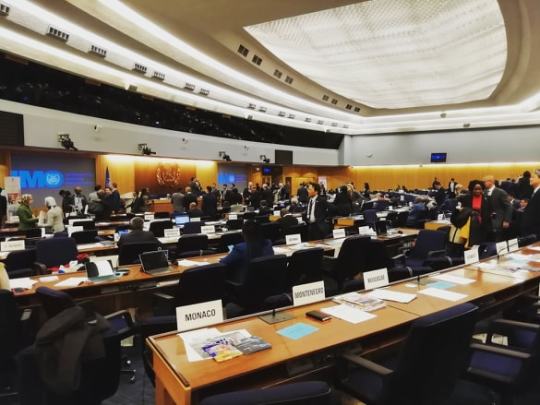
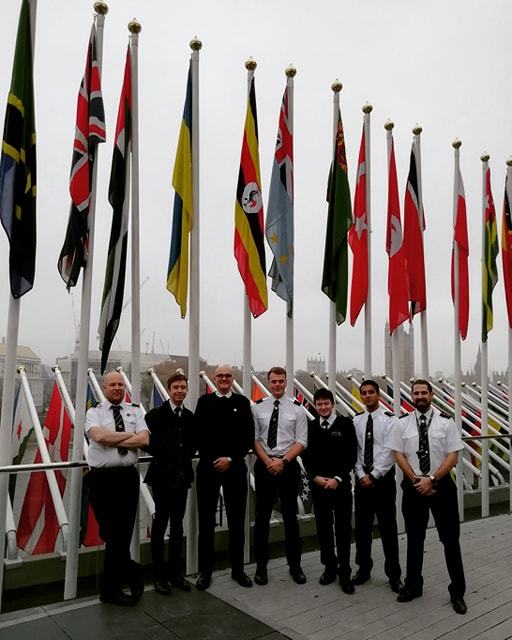
A Day In London
It's easy to get caught up in the academics of the cadetship and forget that, actually, it can be fun at times. At the tail end of last year we were invited up to the IMO HQ in London as guest of the Bangladesh Mariners Society. Seeing as we'd been told so much about the law making process during phase three and a day out is never to be turned down we signed up to go as representatives of Warsash Maritime Academy.
We boarded the coach in the early hours with a selection of Phase one and three cadets spanning all three disciplines (deck, engine and electronic). The journey up was uneventful - some people chatted, some revised (something I struggle with whilst travelling), whilst I just plugged my earphones in and played on the Switch for the couple of hours. Upon arrival we all jumped off and I stupidly left my coat on the coach - as I would later find out, that was definitely my biggest mistake of the day.
Once we signed in to the IMO HQ we were greeted by a representative of the Bangladeshi Mariners Society and gifted with pens, badges, and a tie bearing their insignia. Seeing as we were their guests we swapped ties and made our way into the main hearing hall.
You know how on TV you see debates going on and everyone is wearing headphones? True, that is to help with translation issues, but you don't quite realise how big these rooms are. We were sat in the spectator seats and it would have been a struggle to hear the speaker without the headphones. The topic of this hearing was "Ship Recycling For Sustainable Development: Perspectives From Bangladesh and the Region" - a relatively short presentation (roughly 90 minutes) but informative and actually pretty interesting, seeing how they're making strides to become a bigger player on the world ship breaking scene.
After this we were treated to a buffet lunch of curry and wine - neither of which we were going to say no too! In all honesty we felt a little out of place - it sounds like a great spot for networking but when you have no idea who most of the people are it's difficult to know where to start. Either way, lunch was still over and we had the afternoon to ourselves. Having lived on the outskirts of London for just over 5 years I decided to head into central and see a couple of exhibitions.
Remember the coat comment earlier? Turns out that a wet, windy, cold winters day is bloody freezing when all you have is your college shirt. Regardless, I jumped on the tube and visited The Clash: London Calling exhibition at the Museum Of London before walking down to the West Bank Christmas market and along to the IMO. I got back earlier than we'd all agreed to meet so I took the 'act like you're supposed to be here' approach, walked through the security gates and took it easy in the foyer until I bumped into our tutor and a couple of junior cadets.
A little while later we made our way to a hotel just along the river bank which had been hired out by the BMS for a short presentation ceremony and commemorative meal. Overall it was a pleasant evening - the food was good, the presentations were interesting, and everyone was happy to talk about what they did before their free time.
Eventually we all departed and jumped on the coach back. My god I was glad to be reunited with my coat and warm up again.
It was a fun and informative day - if given the opportunity to visit, I'd highly recommend it. It's one thing learning about the IMO and the law making process but to see it in action is something else entirely.
Until next time,
stay lucky.
1 note
·
View note
Text
Hitting The Books!
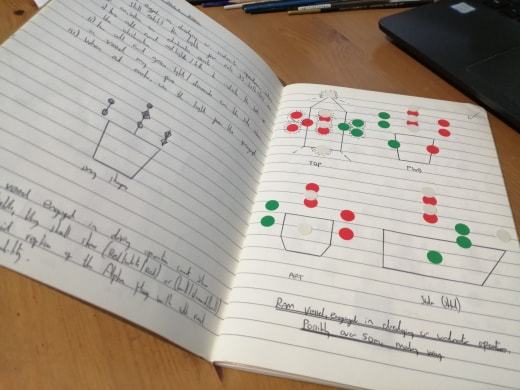
Alright, I’ll warn you now – this is going to be a long one! Today I’m going to try and go through the various elements of orals prep that you’ll encounter. Just like orals prep itself, this’ll probably be a bit of a slog.
Organisation
Your MCA Orals exam will be conducted as per MGN 69. Get familiar with this document as it’ll form the framework of your revision. Personally I broke each section down and wrote it up as a checklist, ticking everything I covered as I went along. You'll probably avoid most of the subjects in the exam but it's sods law that they'll ask about the one thing you missed out, so be prepared!
Classes
I can only speak from experience but almost all classes during phase five at Warsash were optional. Make a point of talking to your course coordinator early on and getting a plan for the semester so that you know who is covering what. Ideally someone should be allocated to cover every bullet point in MGN69 but in reality it's unlikely to happen - we had some great tutors who really did their best for us and some who knew they were optional and applied that to their prep as well.
If you haven't had a proper COLREGS unit in phase three, get them to arrange some COLREG lessons asap. We got lucky - the phase leader had bought in an ex-MCA examiner for mock orals who raised some hell after we told him that we hadn't had a COLREGs unit, leading to him being hired for a crash course. Those lectures were great and he really did the best with the time he was given but we could have done with a proper unit earlier on as well as revision sessions in Phase 5. Don't be apathetic on this, HOLD YOUR COLLEGE ACCOUNTABLE.
It's worth noting that these lessons are revision - you'll probably learn something, but the tutors won't be going through everything in detail like normal classes. If you find yourself a little lost during one of them, use it as a signpost for where you need to be focusing your energies. Likewise, if it's a piece of cake then you can probably take your foot off the gas in that area for a while!
With Peers
Peer-to-peer study cannot be praised enough. For one, it makes it as close to fun as revision can be - it's way more satisfying to vent your frustration to people you can have a laugh with than to a brick wall. Also, your final exam is an ORAL exam, so the benefits of being able to answer questions orally to people who know what you're talking about and can correct you cannot be understated.
Private Tuition
Admittedly, this isn't a route I went down, but it can be a great reassurance to people and I've heard that it can be a massive help in terms of formatting your lights / COLREGs answers. We did have a tutor who put a remarkable amount of his own time into helping us either one-on-one or in small groups, and although it was difficult at times (no one likes having how little they know in an area pointed out) it was well worth it.
Techniques
By this point you should know what works for you in terms of revision - it may be notes stuck on a wall, repeatedly writing down facts, quizzes, or flip cards. Whatever works for you, lean into it.
I personally found old papers and flip cards to help. I used cards for lights, sound signals, and bouys, and got friends to test me using old papers for the rest. If nothing else, the past papers will give you a good sense of the format for the final exam, taking out one of the major stress points.
Also, if you're struggling with lights, make yourself a lights book. Get some colored pens (or sticky dots, in my case) and go through COLREGS drawing out every vessel at every angle (from ahead, being, and at least one side). It's a long, tedious process that will be pointless but once you finish and start trying to identify vessels you'll realist that you've begun to understand the language that is shipping lights. Trust me on this one!
Personal Experience
Honestly, I hate revising. Without being able to put knowledge into practice I never know what I actually know and what I think I know. One of the biggest issues people find when revising for their Orals is falling down rabbit holes and hyper focusing on small sections at the expense of everything else. Remember, your examiner only has an hour or so to test you, so general knowledge will take up about 40 minutes - in the grand scheme of things, they can't cover that much, so it's better to have a working knowledge of all things rather than an indepth knowledge of a few and not much else.
Also, take breaks! If you're getting pressure headaches nothing you read is going to be absorbed so cut yourself some slack. Likewise, if you cut out everything you enjoy, you'll begin to resent revising, and that never helps with information retention. I'm not saying go out and get smashed, making the next couple of days a complete write off, but do get out and clear your head now and then.
If you want more advice, check out this article by Whitehorse Maritime for some less biased tips on revision.
Until next time,
Stay lucky.
#revision#orals revision#merchant navy#navy#cadet#cadetship#officer cadet#studying#sea#life at sea#working at sea#mca orals#warsash#WMA
0 notes
Text
NOE’s and Orals Applications
So, you’ve got your sea time, college is complete, and all you have left to do is finish these short courses – I guess it’s time to face the music and book those orals! Sorry but this will be quite a dry post, there’s very little I can add to this to make it exciting so I’ll just run through the process.
Usually the college will help you with this – after all, they will need to vouch for you and counter sign your photographs. When submitting your NOE, you’ll require:
Copy of your passport (and visa, if necessary) countersigned by the tutor.
Discharge book (original)
Complete Training Record Book complete with sea service testimonials.
Original STCW certificates (Elementary first aid, fire prevention and fire fighting, personal survival techniques, personal safety and social responsibilities).
Valid ENG1
A couple of up to date passport photographs.
More than likely the tutor will call a class to sort everything out, where you’ll check that you have all the relevant paperwork and help you to fill out the submission form. Be sure to write your return address etc super clear – the envelope I got back had an address that was all kinds of strange so you really can’t be too clear. Also, regardless of where you put your photographs (mine went in the back pocket of the discharge book), there’s no guarantee that the MCA will actually use them. Because of this I’m now cursed with a very, very bad NOE photo but it’s not the end of the world.
Once you’ve collated all the required paperwork, the tutor will issue you a signed letter of approval. All of this should be placed in a sturdy envelope, addressed, and sent off to the MCA via recorded delivery (or just dropped round by hand in our case, being based in Southampton).
And now, you wait! At some point between a week and a month later you’ll receive an email saying that it’s been dispatched via courier to the address provided. Once you’ve received this it’s simply a case of calling around the various MCA examination stations to find a location and date that suits you, sticking that NOE in an envelope and getting it off to them to book in.
All in all, it’s a bit of a long and arguable overly complicated process. Explaining the NOE process to people not involved in it is a bit of a nightmare and it feels like it takes a lot longer than it should but unfortunately it’s a game we all have to play.
0 notes
Photo
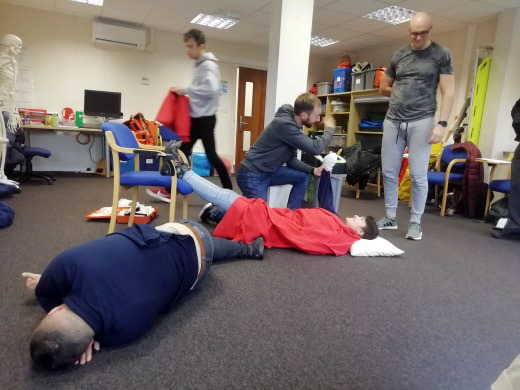
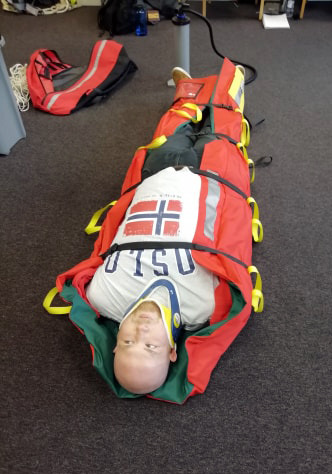
Short Courses (Part 2)
Alright, this is going to be a shorter post as I only have two courses to talk about.
Bridge Team Management: I was expecting to hate this but, to my great surprise, it ended up being one of my favourite short courses. It’s actually the final week of the four week NAEST course but in all honesty, it’s been so disjointed for us that it’s basically it’s own entity. The BTM course was very hands on in the sense that about 70% of the time is spent on the bridge simulator – we were split into two teams of four who would stick together for the rest of the week. Essentially the tutor would give us a brief (a traffic separation scheme, a pilotage, an area of restricted vis situation etc) and it would be up to us to plan and execute the passage. With each exercise we’d swap positions (between helm, officer, radar port and starboard) and, eventually, we became a pretty tight knit team.
The final exercise was a four hour transit. We had to plan the passage ourselves and the bridge team was reduced to two so that we had to multitask more – one acting as the officer and one as assistant. I was getting a little stressed about it before hand but it ended up being fine – yes, the instructors made sure you had to tackle at least a couple of situations, but it just felt like a normal watch close to a relatively busy coastal area.
If you want to prepare for BTM: Know your COLREGS. That’s all you can really do to prepare really.
Proficiency In First Aid: Well that was an fun course to end our compulsory time at WMA on. It isn’t too different to the two day first aid course you’ll do in phase one, just a little more in depth. We were lucky that we had an ex-paramedic as our tutor so he had a dit or five for every condition. Our course included a lot of hands on work and practice scenarios so don’t worry about it being overly academic. The final exam was simple enough, you just had to show that you could perform CPR, utilise a defibulator and respond to a peer organised incident (we got a stroke victim which is tricky when, y’know, they aren’t suffering from a stoke). There was a strong emphasis on the fact that first aid isn’t about curing the patient, it’s simply about keeping them alive until help arrives and minimise any future damage like brain damage etc.
If you want to prepare for proficiency in first aid: Just be ready to get involved, I don’t think there’s too much in there you won’t already have at least a rough idea about, so just have fun.
And that’s it. If you’re course is structured the same as ours then that’ll be the last compulsory class for your time at the maritime academy, assuming that you don’t have resits. Congratulations! I’ll still be around the college for a few weeks seeing as I want to utilise the orals prep sessions but they’re all optional. We may be heading up to the IMO next week so if that happens I’ll make a post about that as well.
Until next time,
Stay lucky.
#merchant navy#medical#first aid#courses#officer#officer cadet#naest#nautical#sea#life at sea#careers at sea
0 notes
Photo

Promote The Hell Out Of It
During the summer I appeared on my friend Misael’s podcast to talk all thing merchant navy. We talk about politics, loneliness, common misconceptions and lots more - it was a real nice time, and I could have carried on for hours more but nobody needs that much of my voice.
Listen on Buzzsprout or any other major podcast streaming platforms.
#merchant navy#merchant#navy#promote the hell out of it#podcast#officer#cadet#officer cadet#sea#life at sea
0 notes
Text

So, short courses – either a nice reprise from academia or a pain in the arse, depending who you ask. I tend to quite enjoy them, falling quite comfortably into the former camp and appreciating the break from the classroom. Phase five saw us undertaking a good 6 or 7 weeks of short courses before three weeks of Orals prep. Some of these are to be taken in the city centre and others at the old Warsash campus. Whilst getting to the old campus was an absolute nightmare during phase three, this year WMA arranged taxis for us which worked out a lot better.
I should probably point out that all my short courses took place at Warsash and I can’t really speak for the set up at the other colleges so I’ll try to keep this as universal as possible.
GMDSS: Ooft, this is a big one, and could quite easily be an frustratingly dull subject if you don’t have entertaining tutors. Luckily we did, and being able to have a laugh with them was the saving grace of the fortnight. This short courses involves learning the operation and applications of every piece of GMDSS equipment you may find on ship. The first few days, for us, was very heavy as we blasted through the theory element but once we started engaging with the GMDSS suite simulators and practicing our radiotelephony skills it became more enjoyable.
The final exam consists of:
A radiotelephony test where yourself and five others have to receive, note and respond to a SAR situation.
A general knowledge exam split between a multiple choice section and three questions requiring you to access the situation, chose the correct gear (including frequencies) and for the emergency and how to respond accordingly.
A one (or so) hour hands on exam where an examiner will ask to be shown how to correctly operate every piece of equipment in the suite, throwing some situations into the mix as you go along.
If you wanted to start revising early for this, I’d suggest being comfortable with the Admiralty List of Radio Stations (volumes 1,5, and 6), memorising the core distress and working frequencies/channels and the general operation of your MFHF/VHF devices.
Firefighting: Oh boy, this was a hot one, although it wasn’t all the different to the phase one basic firefighting course. We had a day in the classroom going over the basics, a day refamiliarizing ourselves with the various types of extinguishers and a basic hot exercise (fighting a live fire inside the training box), a day of situation management training and the final exercise.
The final exercise saw the class split into six groups with three groups tackling a hot drill in the morning and three in the afternoon. We were the middle team in group one. We entered the building on the second floor, immediately walking into a fuel fire, reducing our visibility to about 20cm with black smoke. We put it out fairly quickly using the foam hose, went down the stairs and put out a second, smaller fire. Unfortunately we didn’t spot the casualty (oops) and retreated – it didn’t cost us the course (apart from that they were very happy with our entry) but it would have been good to have nailed it.
The afternoon exercise involved entering the building at ground level through a waist high tunnel, rescuing another casualty and putting out multiple wood fires. I took the role of the 2nd In Command for the onscene co-ordinator, ensuring that my external fire crews provided boundary cooling and casualty support as effectively as possible. If I’m honest, I really enjoyed that position.
If you want to start preparing for this, familiarise yourself with the different types of fires and which type of extinguisher to combat them with as well as making sure you’re comfortable with using and maintaining a BA set. This is a real hands on course so there isn’t too much you can prep for really.
Proficiency In Lifeboats And Rescue Boats: This is a week for those who like hands on work. The first day (plus a few hours here and there) were spent in the classroom but the majority of the week was spent on the jetty, getting comfortable with preparing, launching, running and returning the said lifeboats / rescue boats. The course itself was fairly enjoyable (if a little slow paced) and culminated in a morning of unaided launches, rescues and various other small tasks. There was no big final exercise as you’ll be marked by observation. We messed up a little and managed to get one of the bouy-rope/bucket combos we were using as stand in casualties wrapped around our rib’s engine. Luckily we managed to keep it out of the propeller before untangling it so it didn’t affect our chances at passing – if I’m honest, I don’t think anyone really notices, but these things happen, and you need to be able to think on your feet to sort it out.
If you want to start preparing for this, get comfortable with the generic launch and recovery of davit launched lifeboats and rescue boats. Everything will be covered during the course but it’s good to know in advance.
Efficient Deck Hand (EDH): This week will either be a piece of cake or pretty full on, depending on how much you were taught at sea and how much you remember. I didn’t really enjoy it all that much. Topics covered in class include:The basic 13 or so knots.
Short / Stopper / Eye and wire splices.
Various kinds of whipping.
Bosons ladders and working platforms.
Various anchoring and crane/davit operations
Basic MARPOL and gangway/accommodation ladder/pilot ladder requirements.
The final exam was an hour (ish) grilling by one of the tutors or an external examiner in groups of two. We had to use the bosons chair, rig and use the work platform, tie a handful of line stoppers and knots, and answer a load of questions on everything else. In all fairness, it was good practice for orals, but I think that’s down to the attitude of our examiner more than anything.
Personally I feel that this should be taught as a proper Phase 3 unit where you spend two-three hours a week focussing on a specific topic instead of rotating around whenever the space is available over the course of four days (the fifth is dedicated to exams). However, the problem is, to obtain your EDH certificate you are required six months of sea time. Perhaps teaching EDH in phase three and examining in phase five may be the answer but it’s far from ideal. Also, the course notes we were given weren’t particularly clear with outdated illustrations, poor ‘how to’ guides and an incomplete knot section. I’m very tempted to illustrate my own ‘how to’ knots, splice and whipping guide and stick it online for anyone to use but I’ll need a little free time first. This may seem a little petty but when they dedicate all of three hours max to knotwork it’s hard to learn from poor teaching materials if you didn’t nail it in the ten or so minutes dedicated to each one.
If you want to prepare for EDH: Learn the 13 basic knots and hitches, get comfortable with the theory behind anchoring and ensure you have a basic understanding of COLREGS and Marpol Annex 1 and 5.
So, that’s it for Short Courses: Part One. I still have a couple to do (NAEST Simulation and Medical First Aid) so I’ll update this once they’re complete.
Until next time, stay lucky.
#maritime#merchant navy#maritime academy#sea#life at sea#cadet#cadetship#short courses#wma#warsash#officer#officer cadet
1 note
·
View note
Photo

Reflections And Resits
The biggest perk of front loading my sea time after the end of phase three was being able to enjoy July, August and the beginning of September off before returning for phase five. Those two months went by incredibly quick with a short holiday up north to see Have Heart (and find the Northern Monk tap house), getting completely waterlogged at ArcTanGent and finally seeing Limp Wrist in London. For the most part it was pretty chill – aside from a little revision, I just kept up to date with my Colregs and the basic LSA requirements for our ships. Admittedly I could probably have spent more time revising but then again, spend ten of the last twelve months at sea and you’ll find pretty much anything preferable to maritime work as well.
Ofcourse, time apart from a situation gives one time to reflect. So, some thoughts looking back at my sea time, from day one to the now:
Don’t expect to be schooled: You’ll come across helpful crew members and ones that would rather tar rope than help. The only thing you can do is involve yourself with the good eggs and make yourself available. Sure, after four months of split shifts the idea of spending more time on the bridge than necessary isn’t particularly appealing but you can learn a lot from hanging around for an extra half hour after watch (especially if it’s the daytime shift) to chat to another officer who is willing to put themselves out there for you. Still, be sure to give them ten-fifteen minutes after handover to get settled before asking them questions – no one will say no to a cuppa, so get that kettle on. I’m incredibly grateful to the crew who took an active interest in my education (from Abs to Officers and, on a few occasions, Engineers).
Be humble: I remember when we had a cadet onboard who really didn’t endear himself to the crew. We were in the bar and everyone was having a moan as you do, when the Captain pointed out that, as long as a cadet knows when to be humble and when to listen and learn, they can get away with making mistakes. It’s a fair point – it’s ok to not know something, or be inexperienced, but being arrogant is a bad look.
Reap the benefits: I don’t think there’s anyone in our cohort who hasn’t become more confident and settled over the course of their cadetship. It’s hard to see when you’re onboard – even if it’s not genuine, I feel like this is a job where you, at the very least, learn how to front confidence as a way of surviving at sea – but come home and you’ll probably notice a change in yourself. Embrace it. It’s nice. A couple of my classmates were the mildest, most reserved straight-out-of-schoolers when they joined and you just wouldn’t recognise them now, in the nicest way possible. It’s great.
Throw yourself into it: It’ll make the time go quicker and, if the crew are good, land you the more enjoyable jobs. Some of my favourite times were when an officer was confident enough in me that they’d let me wander off, do a third mates job and come back without constant checking up. This is the job you’re training for. Embrace it, and build a reputation for being reliable…
...but don’t forget you’re a cadet: Enjoy yourself. You won’t get the same amount of shore leave or lee way as an officer. If there’s a BBQ, have a quick word with the officer of the watch and see if they are ok with you missing that watch and enjoying the BBQ / shore leave / fight night, if there’s signal. Remember, by the end of your cadetship you should be a valuable asset to the bridge team, but at no time are you necessary in regards to the safe manning matrix. Allow yourself to enjoy yourself.
Do your coursework: Try for at least one report a week. To be fair I pretty much discarded or cannibalised most of my trip one reports but that’s the cost of getting better – no one needs a report on coiling rope, but you’ll get a good report on the various types of rope in use on ship, their pros and cons and the various SOLAS regulations surrounding them. Try to find a nice balance between quality and quantity – I think I have about 40 including drill reports, all of them featuring references to official documents and codes. A report without references is essentially useless. Likewise, if you can make a dent in your dissertation whilst at sea, do it!
You’ll get tired of answering questions about the merchant navy: Just accept it. We’re still part of an invisible industry, and people will want to know about it. You’ll find a way to politely steer the conversation away from it onto something else. Despite how much it might feel after such a long stretch away at sea, you are not your job.
Sacrifice: You’ll have to sacrifice something - there’s only so many hours in the day. For the most part, I’ve accepted that I’ll have to lay up on the drawing and painting this year and dedicate that time to working at sea, coursework or studying. But don’t worry, it’ll be worth it in the end - I’m looking forwards to having no coursework whilst at sea and six months of free time when I’m back, I’ve just got to get through 2019.
Of course, I still had that Mates & Masters Stability to resit when I returned to Warsash. Luckily we had three weeks before our short courses to tie up the resits and submit our dissertation, and our exam sat slap bang in the middle of it. A couple of my course mates were resitting as well so we decided to bunker down at the library between 9am and 10pm most days and blitz EVERYTHING.
In all fairness, it paid off – I was feeling pretty confident as I left the exam and rightly so, I passed. The dissertation was easy enough, I only needed to format it and write an additional 1000 words to complete it so a couple of days in the library and I was done. I got 65% for it, which I was both pleased and disappointed with. On a university scale that’s only a few marks from a Distinction but I’ve got so used to the MCA’s nature of requiring around 60% for a pass (it’s 40% at universities) that it felt a little hollow. Still, it’s done, and hopefully I’ll never have to write an essay again.
Let’s talk about future posts. I think I’m going to do a couple of posts on the phase five short courses and perhaps another on booking your orals. As per usual, if you have any questions, drop me a line on [email protected].
Until next time,
Stay lucky,
#Merchant navy#navy#merchant#officer cadet#officer#cadet#ships#shipping#training#sea#life at sea#maritime#maritime industry
1 note
·
View note
Photo
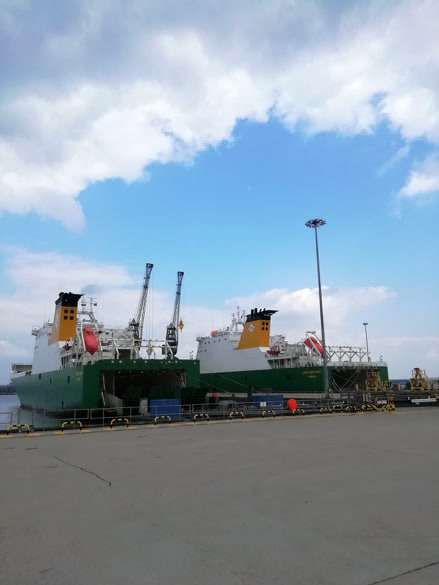
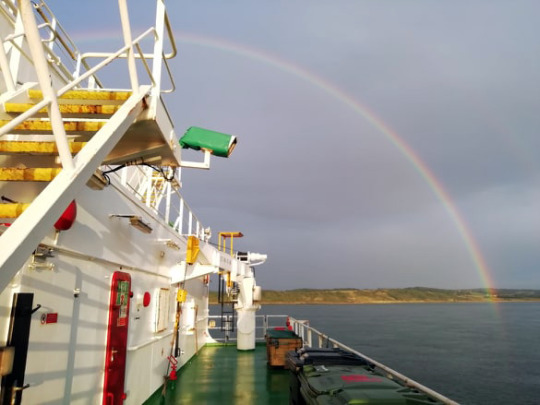




Trip Three (Part Two)
So, after returning to Marchwood following our Brexit induced anchor period, I packed my bags and hopped over to the Hartland Point. The plan was to sail that day but we ended up staying alongside for about a week. The plan on the Hurst was to give me the weekend at home because...well, why not, but sadly that didn’t happen. In hindsight I should have asked to move the following week but hey, such is life. It wasn’t too bad though, I enjoyed a few cinema trips whilst we were alongside and it was really nice to catch up with all the officers from my first trip. For the majority of my time on boat there were three other cadets on board – two engine, one eto, and myself. The crew of the Hartland are a good bunch anyway but it makes a big difference (in my opinion, as a cadet myself) when there’s a few of us onboard to share stories and mess around with. I also had Dan and Lewys (from the Anvil and Hartland) join us on the Hurst for a while and that was a great time – I got on well with both those lads the first time we sailed together so to have all three of us onboard at the same time was a pleasure.
Eventually we set sail to Duqm, once again passing through the Bay Of Biscay and passed Gibralta into the Med. The Suez Canal was the same as always – you do it once, you’ve done it a hundred times. Honestly, there isn’t much to say about my time on the Hartland – it was fun sailing with Alex and Mark again, and the Chief Mate was really helpful in terms of arranging opportunities for me to get involved with everything I needed to complete my TRB. There was a funny moment where we had to drop someone off into a pilot boat just off of Gib – the second mate had accidentally plotted the drop off point on the ECDIS wrongly so we had to wing it to make the correct spot in time. Note the hard right angle on the ECDIS to get back on track – that was a lot of fun to pull off! Still, no harm so no foul, it was just something to chuckle about afterwards.
After we dropped off our Duqm cargo in Marchwood we had a short run to Germany, complete with an absolutely manic day of cargo work, before heading to Devonport for two weeks of repair time. That wasn’t too bad really, I just got on with my own work, assisted Mark (third mate) and enjoy my off time in town including a tour of the Plymouth Gin distillery. Like any job, that last week dragged but I’d mentally tapped out at that point – the end was in sight and after 5 ½ months at sea I was finally going home. The highlight of our work period in Plymouth was definitely getting the Rescue Boat down in Devonport docks. It’s never a bad time to get close to the water and burn some fuel for a morning, even if one of the navy ships decided to use us as target practice (no shots were fired, luckily – they were just aiming and tracking).
Until next time,
stay lucky.
0 notes
Photo
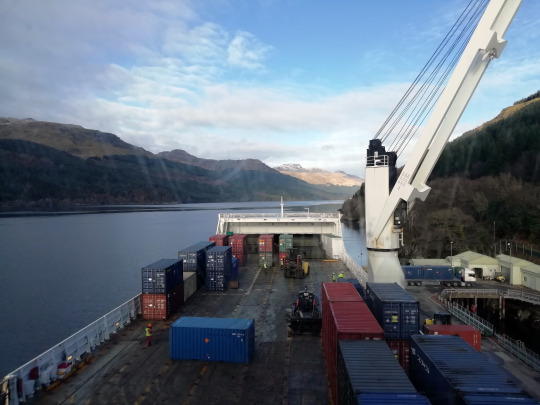
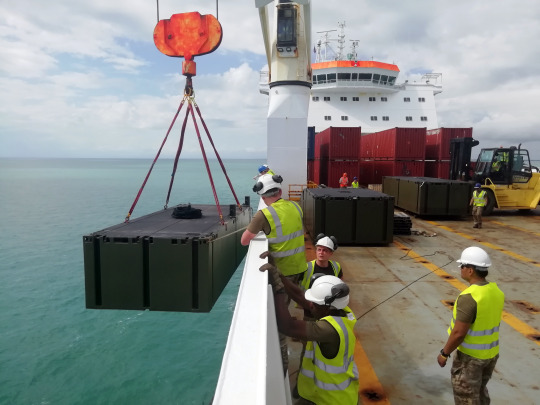
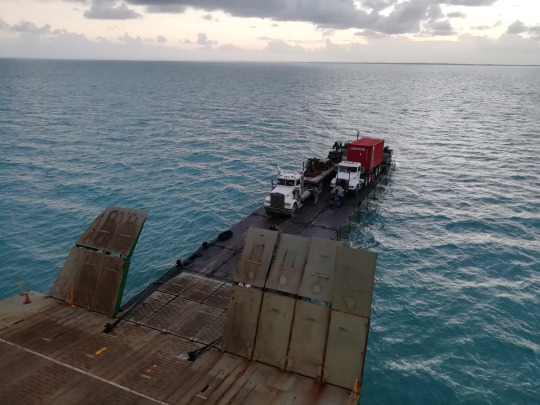

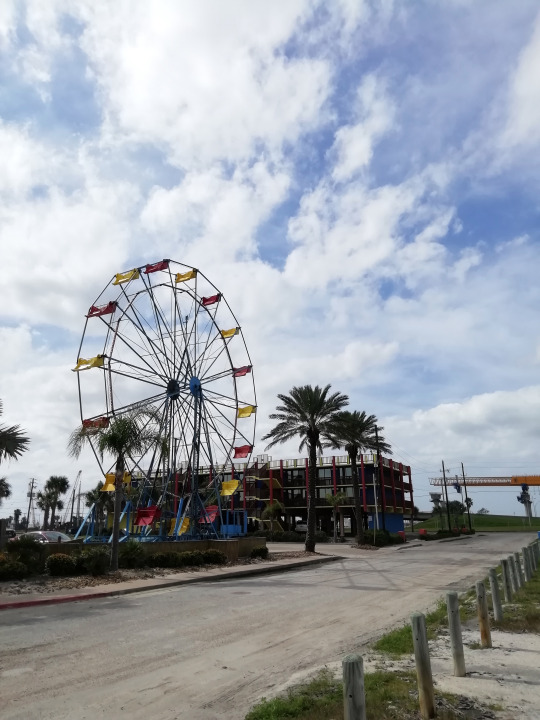
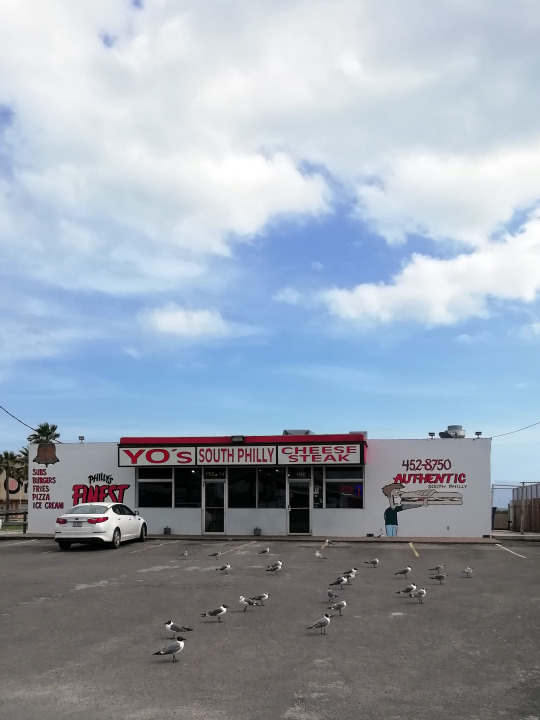
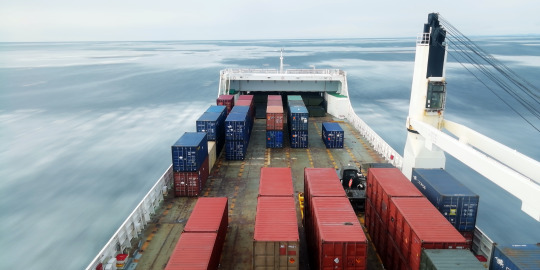
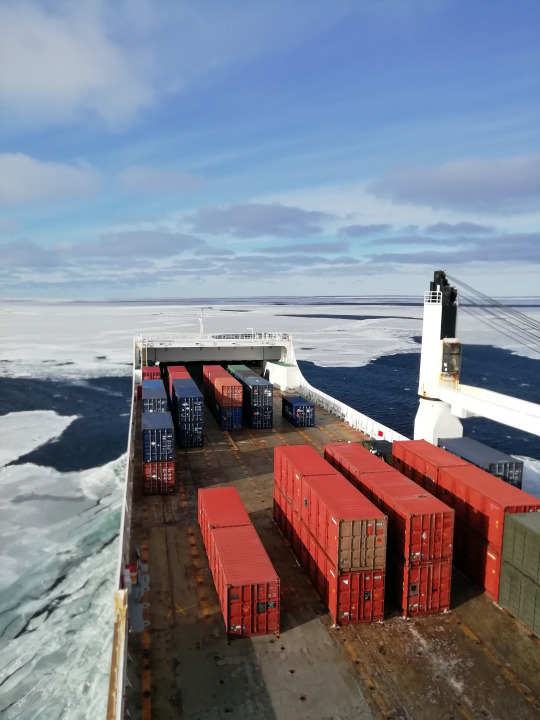
Trip Three (Part One)
It was going to happen eventually – after a Christmas break and a hectic house move I got the call telling me to join the Hurst Point at Marchwood. Luckily I’d stuck most of my sea gear in a single box when packing for the move so it was simply a case of sorting my clothes, saying my goodbyes and throwing everything in my suitcase/backpack combo!
The first part of this trip was hectic – we pretty much immediately set sail for America via a quick stop off in Scotland. The Scottish highlands look beautiful in the sun but the temperature left something to be desired!
Whilst the uk leg of the trip was fine, the Atlantic in winter was far less accommodating, providing us with a reliable ten or so days of high waves and low visability. The only positive that comes with rough weather is the deep sleep that follows multiple nights of rolling. Still, we eventually reached the Gulf Of Mexico for our first stop – Belize!
I can’t really say much for Belize – the port was too small to take us so we anchored up and begun to build the mexefloat. After a good three to four hours of using the ships crane to lower each section into the water we lowered the stern ramp, allowing the loading crew to slowly but surely load the vehicles and ferry them to land. All in all it was a pretty long day, the highlights being the dolphin which spent a good hour keep an eye on progress and the barracudas which rise from the deep when a flash light is shone upon the ocean at night. They are as ugly as the nature documentaries suggest. Still, the pilotage was enoyable – I asked if I could jump on the wheel to navigate the various small island-come-private-hotels in the carribean whilst the pilot filled us in on all the gossip. That was good fun.
Next stop was Corpus Christi, Texas. This was a new one for us, being both a port we don’t generally service and seeing a camera crew pointed at the ship as we arrive (check out the local story here). I had quite a good time in Texas – after spending the morning supervising the container discharge and joking with the local loading crew (who were, to a man, absolute giants) I struck out to explore. In all honesty, the surrounding area felt like every Lifter Puller song you’ve ever heard, with closed down businesses, faded store signs and hardly anyone hitting the pavement. After wandering around for a couple of hours I decided to camp out at one of the seaside bars with $1 cans and chat to the locals. Turns out that we were a few weeks early for spring break and the town was still in winter mode, which was a bit of a shame. Still, the beer was cheap and the locals friendly so it was an enjoyable enough afternoon.
I didn’t stay for too long though as I promised to be back on ship by 6 – at the time of leaving, we were unsure if we’d be departing the same day. Luckily the work dragged on so, come six, everyone knocked off and got ready for a night on the town. We started off at a bar within a warehouse – thing every Texan stereotype you can. Country band, lots of beer, big steaks and super long tables. We had a good time but we (the second mate and I) ended up splitting from the group when they decided to call it a night and head back to the ship. We eventually (via a couple more bars) found ourselves at a Country Club which, as strange as it was, was actually really good fun. Imagine a small town UK club which plays country music and encourages line dancing...yes, it was very, very Texan.
Next up was Canada where I truly learnt the meaning of the word Cold. The journey to port featured three days (each way) of sailing through ice. To be fair, it was quite a spectacular sight, and the moonlight shining from the surface meant that night watches were considerably more interesting. However, this beauty caused us a number of problems once we reached the berth – an ice block took out our bow thruster, the speed it was forming stopped us from dropping anchors and the wind kept us off the berth, meaning we had to utilise two tugs to keep us alongside. Mooring up took close to five hours.
Cargo was not the most enjoyable experience as you can probably imagine. Even with multiple shirts, trousers, tees and a specialist snow suit the cold was biting. Believe me, when it hits -25 degrees C, you’re going to feel it EVERYWHERE. I’d still love to visit Canada in the summer though – sadly I’ll have to chalk this stop up as all work and no play. Saying that, the 10 hour pilotage outbound was very pleasant – the pilot felt more like a tour guide, filling us in on the local history of the areas we passed. I do have a soft spot for the times when the local pilots are happy to fill us in on the area.
Following this we hugged the coast back down south to Sunny Point. As much as I would have enjoyed a night out in town by the time we all finished working I didn’t feel like it was worth the $120 return taxi and two hours travel so I stayed behind to get my bunkering tasks signed off. Gregg, one of the motormen I got on with, was on bunker watch for most of it so it wasn’t a bad night really, trading stories from the punk and rave scenes.
After crossing the Atlantic we had the joy of spending the best part of a month anchored off the Isle of Wight whilst the powers that be bickered over Brexit. The rumour was that we were to become a cross channel ferry service to help relieve the inevitable congestion that Brexit will entail but eventually we got the word that it was being delayed (for the first time of many) and we were to return to Marchwood. Honestly, it dragged. The chief mate and I agreed that I wasn’t really gaining anything from being onboard and, seeing as the Hartland Point actually had scheduled voyages coming up, we decided that I should change ships so I could finish my TRB (which was mostly cargo based at this point). Still, the anchor watches gave me plenty of time to break the back of my dissertation so it wasn’t all bad.
All in all though, I struggled with my time on the Hurst. The overall uncertainty caused by Brexit, the frustration of extended anchorage and the general mid cadetship slump hit me hard. By the time I had swapped ship I had spent 7 of the last 8 ½ months at sea and believe me, that will affect you. A lot of the old seamen will hit back with ‘well, back in my day we did 14 months trips, you have it easy blah blah blah’ but they’ve still been enjoying the 3 on / 3 off life for the last fifteen odd years so y’know, what they did in their twenties becomes pretty irrelevant really. Also, communication with the outside world can be a double edged sword – I think that, after most of phase three being spent in quick turnover commercial ports and Duqm’s desert car park, I was starting to feel that I was missing out on a lot, especially hearing about classmates getting time off in glamorous ports, friends hitting festivals and everything else we take for granted when we’re at home. It definitely can lead to an overbearing feeling of ‘out of sight, out of mind’ when you hear about everyone’s lives and you’re unable to contribute anything to the equation. Ofcourse, everyone wants to hear stories of the high seas when you’re back, but it’s surprising how quickly you drop of the radar whilst you’re actually away. I’m fully aware that this sounds like I’m having a bit of a moan here (because, you know, I suppose I am) but ever since starting this blog I’ve been clear that I don’t want to simply push the marketing line of ‘earn high and experience the world!’ - I want to give a realistic account of my time as a cadet, and sometimes that means talking about the negatives.
Until next time,
Stay lucky
#Merchant navy#merchant#navy#cadet#cadetship#officer#officer cadet#texas#belize#america#north carolina#sailing#life at sea#sea#sea life#seafarer#training
0 notes
Photo
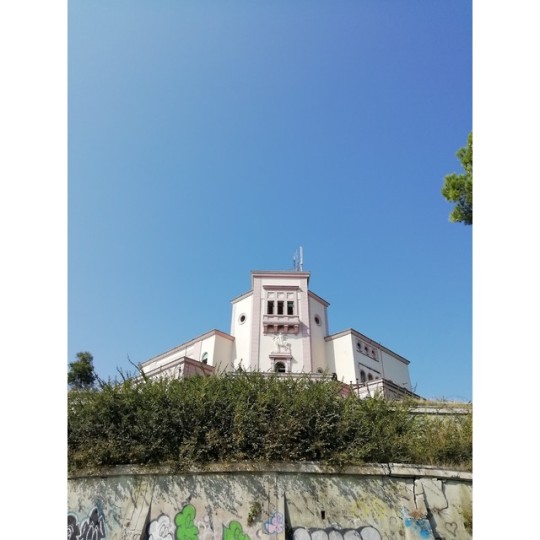
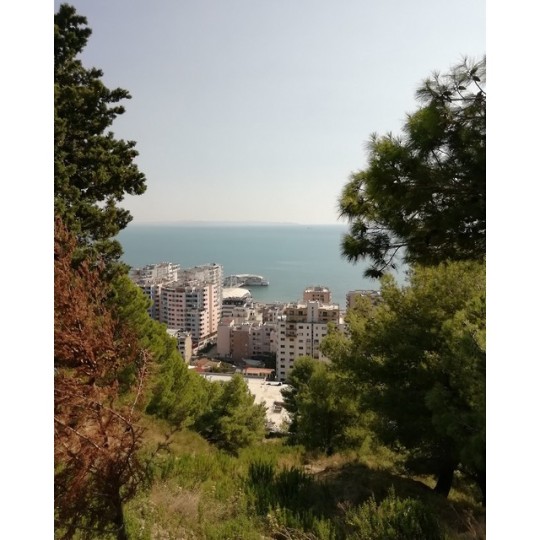



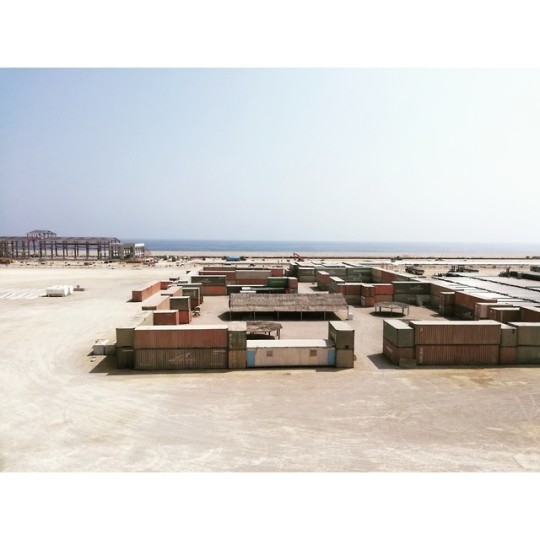

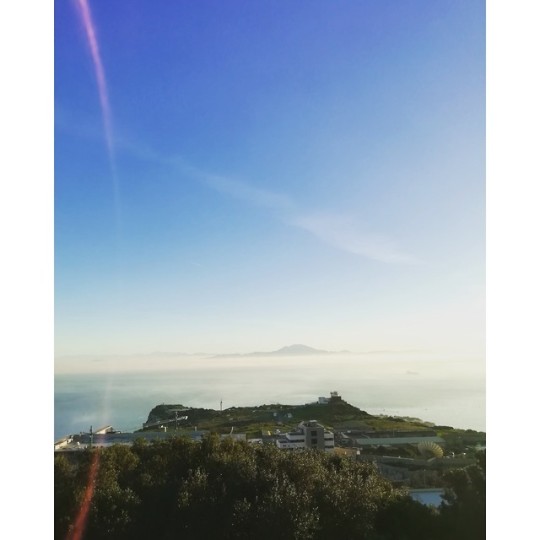
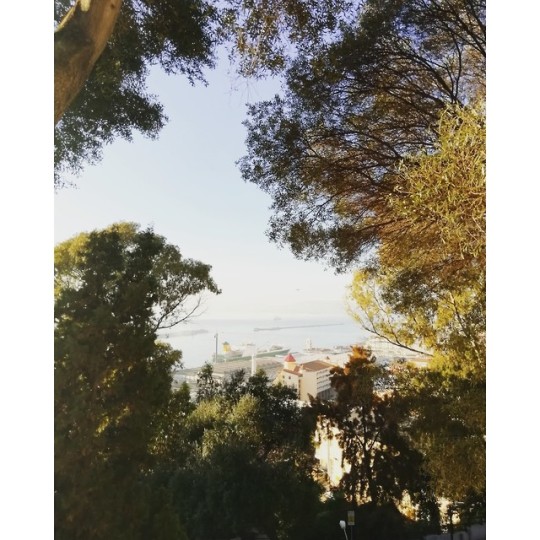
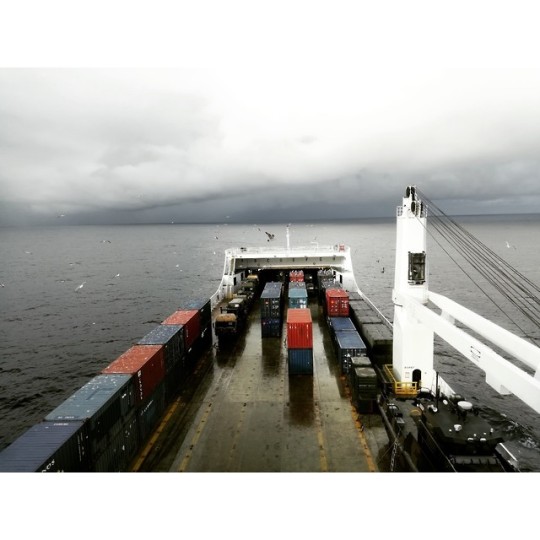
Well to be honest, I’ve neglected this blog, and I probably would have continued if one of the new cadets who joined last month mentioned that they’d actually read it (cheers Andy!) so I decided that I should probably give it an update now I’ve got some free time. So, without banging on too much, what’s going on now?
Well I finished my sea time. I paid off my final ship yesterday after a long five and a half month stint. In a strange way I wouldn’t say that it’s any worse than doing four months – at that point, you’re committed to the ship life, so you just take it day by day. I’ll talk about that more in a future post, for now let’s talk about my second sea trip.
I finished college one week into August and a week later I was joining the Anvil Point in Marchwood. Being one of Foreland’s point class vessel I knew what to expect so I wasn’t too apprehensive. Upon arrival I was told that we were heading out to Duqm (Oman) via Duress (Albania) as part of the Saif Sereea exercise after a short stay in Devonport, Plymouth.
So, what is Saif Sereea 3? Here’s a heavily condensed explanation taken from the Royal Navy website:
“Saif Sereea is a joint British-Omani military exercise intend to reinforce the relationships between Britain and Oman. The overall aim of the exercise was to test the UK’s expeditionary warfare strategy and maintain strategic relationships with our allies in the Persian Gulf. Involved in the operation was the HMS Albion, HMS Dragon, HMS Blyth, HMS Ledbury, RFA Cardigan Bay, RFA Lyme Bay and us, the MV Anvil Point.”
Duqm (despite essentially being a carpark in the desert) is an important place to hold as it is a fantastic loading/offloading port, offers growing dry dock facilities and is situation in a prime spot for any action involving the red sea, the gulf of oman or the suez canal.
The trip started normal enough – the obligatory few rough days across the Bay of Biscay followed by an easy sail passed Gibralta and into the Mediterranean. Our first port of call, Durres, is one of the largest cities in Albania. The berth was situated right in the city centre meaning that you could go from cabin to cold beer in under three minutes – not bad at all!
Duress is what I’d call a developing city – it’s going through a period of redevelopment following the economies collapse in the late 90’s and a short period of literal anarchy in ’97. As such, you can go from well developed touristy area to less developed areas including half finished buildings and squats within a street or two. The conversion rate was definitely in our favour – you could enjoy a three course meal plus a few beers in some of Trip Advisors top ranking restaurants for under twenty quid which was great. Every other store seemed to be either a coffee shop or an ice cream stand (costing around 80p and £1.40 each) with both being really high quality. All in all, if you enjoy your food and you’re in the area already (it probably isn’t worth a trip alone) then it’s worth a visit! The amphitheater, one of the oldest in Europe, is well worth the £1.50 entrance fee, if only to soak in the surrealness of standing in a building originally built during the second century AD whilst simultaneously being surrounded by housing. Luckily the Albanian government are looking into treating it as the area of historical importance that it deserves to be but I can’t see anything happening soon. Meanwhile, sadly, it slowly falls into disrepair.
After hurrying across the med with a storm on our stern we moor up at Port Said for the night. Port Said is the entrance to the Suez Canal – as soon as day starts to break we pick up anchor and begin to lead the convoy through.The Suez Canal is a sea level waterway opened in 1869, providing a direct route between the North Atlantic and the North Indian oceans via the Mediterranean. It is of great convenience to seafarers, removing the need to sail around the horn of Africa and brave the South Atlantic and shaving over four days off of most middle east to europe journeys. An average of 47 ships traverse the 120 mile canal every day.
The Suez itself will take about 10 hours to transit, but still requires three separate pilots. On one side you have Egypt – for the most part desert, occasionally broken up by military bases and statues – and on the other, Israel, a combination of more desert, 80% finished but completely derelict cities, small towns and the occasional expensive looking resort.One of the most notable sights is the Mubarak Peace Bridge. Despite only being opened in 2001, today this 2.4 mile bridge is unused, becoming little more than a photo opportunity and an entry into numerous ship’s log books. It’s an exciting transit the first time you do it, but by the third time it loses it’s appeal.
Around a week later we arrived in Duqm – visually, it looks like a cross between a car park, a DIY military base and a very isometric scrap metal yard. Over the next few days the rest of the task force arrived, filling the port with grey ships. Over the next few weeks we would spend our time delivering equipment to the task force, conducting maintenance alongside, sitting at anchor and occasionally taking part in exercises (although this rarely extended beyond slowly sailing around a designated square whilst the liaison officer took part via comms). One big issue we had was the lack of any real speed – eventually we began to run out of fresh water (we can only generate our own when sailing at over 8 knots), requiring us to take on fresh water from the quay side. It was drinkable but it wasn’t the clearest or freshest I’ve ever tried, and it certainly had a tint by the time we got back to the UK.
One perk from our time in Duqm (aside from the tan) was getting to visit the RFA Cardigan Bay (thanks to my classmate Rich who was also taking part) and the minesweeper Ledbury. Both offered very different seafaring experiences – the Bay felt very much like a hive city whilst the Ledbury was very old fashioned and claustrophobic (well, it is almost forty years old). We also made it over to Container Town – a rough town operated out of… well, check the pictures, containers – that only really opens when there’s enough ships in to make it viable. With over 5 military ships and us around... it was definitely worth opening the bar. We stayed for a couple, rinsed the wifi and got a pizza from the pizza hut container (yes, they even had a franchised pizza hut guy!) before heading back to the ship. It’s no London but after three weeks of Duqm heat it was a great change of pace.
The journey back was uneventful. And there’s a hard truth in that – back home, everyone will assume that each trip will contain some great story, but this is a job, like any other job and some trips are just…uneventful.
Now, my company will do it’s best to pay it’s trainee’s off in Marchwood. It’s simple (being a uk port) and cheaper (as they don’t have to buy international plane tickets) so it’s a bit of a no brainer. In all honesty, it works for me – I can be home within 2 to 3 hours so it isn’t actually a bad home port. However, this time I was to sail with the Anvil to Gibralta, enjoy a night on the town, and fly back the next day. Seeing as I’d only flown once in my life at this point, that was quite exciting.
I can see why sailors get excited when a Gib stop is planned. It’s so convenient! The port is only ten minutes walk from the town, everything is in pounds, home from home mobile internet access and the place in general feels like a mixture of Spain and England. We moored up at midday and by one we’d finished unloading our miniscule amount of cargo, leaving us with time to explore! I broke off from the group and decided to climb the rock myself – I didn’t make it to the top but I did stumble across Jew’s Gate Cemetery where I called it a day and wandered back into town.
One boozy night later (sensibly I decided to skip the casino) and I’m ready to fly back home. With a chronic lack of flat ground in Gibralta, their airport is built along their border with spain and the runway essentially leads to the ocean. It’s quite a surreal feeling, watching the plane speeding towards the water before pulling up.
In terms of training, this was a bit of a strange trip – we actually did very little consistent sailing or cargo work, but the amount of time spent alongside or at anchor gave me a lot of time to learn on the hands on element of the third mates job. It is easy to become complacent when things are quiet for a while so I’d advise making a list of what TRB tasks you can be finished in any time period and being proactive in finding (or creating) opportunities to do so. I probably could have been more forthcoming with what I needed to complete and returned with a fuller TRB, which would have made the new trip easier, but due to the nature of this run there were some parts which just weren’t going to get done. Still, that’s easy to be said in hindsight – the trip certainly felt full on at the time!
My next post will probably be split into two and a 5 ½ month trip is a bit too large for one blog post before I reflect on dissertations, finishing your TRB and making the most of the time you’ve got.
Until next time,
Stay lucky.
0 notes
Text

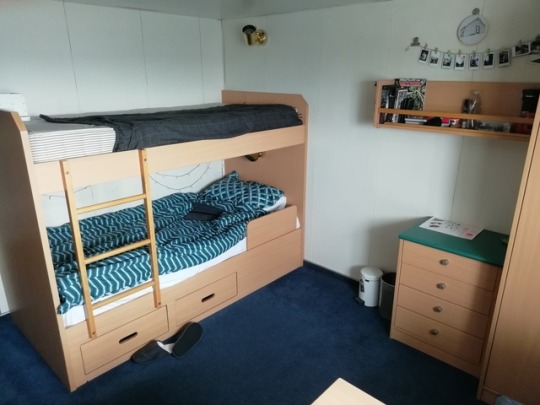

Sod it, let's get another post up and talk about accomadation.
I'm currently in what is dubbed the cadet cabin. Its the only cabin on ship with bunk beds but it's a pretty decent size, the porthole opens and it comes with a tiny ensuite. It's actually on the lower accomodation deck so I'm flanked by the officers bar and the drying room - ear plugs aren't necessary but I would recommend them.
I've found that cabins can be pretty bland which doesn't bother some people but I like to personalise wherever I'm staying so I bought along some instax prints, a flag and a few other bits from home to brighten it up. I'd recommend keeping an eye out for low weight and easily package bits for your sea phases - all of these bits pack down to hardly anything but make such a difference.
Until next time, stay lucky.
1 note
·
View note
Photo

So this is it, my first ship of my second sea phase. Due to a somewhat last minute change of plan I’ve found myself on the Anvil Point, one of the Hartland Points sister vessels. This means that it didn’t take much time at all to become familiar with the vessel as it is, aside from the odd thing, exactly the same as my previous one. I also knew some of the crew already – I’d previously sailed with both Choffs (Chris and Ed), the fourth engineers (Mick and Elliot) and one of the AB’s (Glen).
We spent the first few weeks in port, meaning that I’ve spent a lot of time on day work working the deck with the third mate. It’s been interesting and, despite getting a little restless being alongside for so long, I’ve learnt a lot being able to really get involved with helping the third mate with his jobs and safety checks. The port time also meant that we’ve been able to launch the rescue boat and lifeboat for a check – that was a fun couple of days on the water! I also forgot how quickly your hands get grubby and stained doing deck work – these aren’t going to feel clean for a while now…
Another bonus is being given the cadets cabin instead of the suez one – yeah, it’s smaller, but it’s still bigger than most places I’ve rented and a lot cosier so I think I’ll be thankful for this once we get into the routine of watches. Also, if you can, take a small travel kettle and some good coffee to sea with you – it makes all the difference when you get half days or just want to relax without seeing others.
As much as we moan about not having decent internet access at sea, having access to mobile internet access for the last two or so weeks has made me wonder if that lack of access is necessarily a bad thing. Once you’re an hour or so from port that’s it – aside from whatsapp, you don’t have any connection to home. Sure, it’s frustrating for the first day or two, but after a while you just stop caring and it’s not a bad feeling really.
Anyway, we’ve got a few more days in the UK and then we’re off for three months – I don’t know the full plan (and the bits I do know I probably shouldn’t put online) but I know that the winter cold won’t be an issue for quite a while!
I’ll try and update this next time we get to port but I have no idea when that’ll be or if shore leave will be a thing – feel free to check up on us on one of the ship checking websites if you have a minute and drop us a line.
Until next time, stay lucky.
1 note
·
View note
Photo

Ok, I’ll throw my hands up and admit it – I really dropped the ball on the blog. A big increase in work, a tough break up and a general lack of motivation meant that I didn’t really think of updating this during phase three so… well, I didn’t. But I’ve just begun phase four and it seems like a shame to leave the blog ending such abruptly so I thought I’d do a post to sum up what to expect after your first sea phase.
First up, there will be stories – so many stories! You’ll be hard pressed to find a situation where someone won’t chip in with ‘well, when I was at sea…’. It sounds a bit obnoxious but honestly, it isn’t. Hearing how the classroom lessons relate to everyones sea time really helps to contextualise the theory.
However, the downside to this is that it can be hard going back to looking at ship life from an academic standpoint – I think we all struggled with frustration at one point or another after four or more months of hands on application. It reminded me of the differences between the driving theory test and, y’know… actually driving. Sure, it’s the same for the most part, but everyone has their nuances and no plan survives contact with humanity so sometimes you just have to suck it up.
In many ways Phase three felt like two semesters pushed into one. The first four-ish months was quite eclectic – Meteorolgy and Stability come to mind as the toughest of the units. There is a lot of information to take in for Met but the exams seem to follow a formula so if you can get hold of a few past papers then you should be able to refine your revision areas nicely. I have no problem admitting that maths is not my strong point so Stability is proving to be a bit of an pain but that’s a common one for people to struggle with.
The second half was much more law based – in fact, aside from the ship handling unit in the simulator (which was great) and the four week NAEST short course (which wasn’t quite so enjoyable), it was pretty much all law of one description or another! On one hand that means very few exams, but on the other there are a lot of essays. Different strokes for different folks but I prefer coursework to examinations so, aside from the subjects being quite dry, that wasn’t too bad.
You’ll also have to sit your Signals exam which is one hell of an expensive resit if you fail! To pass you’ll need to identify 18/20 for both flags and morse code as well as score 9/10 on general questions and convince your tutor that you know the meanings of the flags. There’s no easy way to learn ‘em – you just have to do it. I found that making revision cards and hitting them hard for half an hour every night helped, as well as group revision sessions with my coursemates. It isn’t fun but I’d recommend getting on that during your first sea phase so it isn’t such a commitment during phase three.
I’ll openly admit this though – I was pretty burnt out by the end of the second semester, as were most of my coursemates. There were a few bits that would have been useful to have known before our first sea phase and others which felt a little unnecessary, especially given that we don’t get our exceptions anymore when going for our Chief Mates ticket. Ah well, it was a struggle but we all got there in the end.
On a more general note, Warsash has properly moved into central Southampton now. As a whole, I prefer it – I like living in the centre with The Art House and Forbidden Planet within walking distance and having easy access to the facilities at Solent is a real bonus. The college building that is now Warsash Maritime Academy is a pretty standard college building, a bit clinical but perfectly practical. And that’s where it falls down a bit – the Warsash reputation is built on legacy and we left that behind at the old campus. There’s no real maritime vibes in the new place. It’s also led to a lack of community vibe – in the old campus you’d make friends with engineers and officers from different phases, drink with visiting Officers in the bar and have breakfast with your classmates. There’s none of that in the new place. It’s just…where you go to class. I’m glad I got to experience the classic Warsash as this isn’t it. Will that cause problems for Academy? Only time will tell. I feel like a lot of people will come to it with more of a ‘university student’ mindset which could be troublesome but I’d be lying if I said that the old Warsash site wasn’t a nightmare if you actually wanted to do anything. Swings and roundabouts I guess.
On the subject on the city centre, I’m sorry to say that you’ll have to get better at budgeting – accommodation is generally quite expensive and you’ll be surprised at how much you lose to food. I stayed in Emily Davies, the most basic of student accommodations available to us. On the plus side the location amazing – you’ll be two streets back from the high street. In terms of picking up supplies, going out and catching a coach/train it’s a dream. The downside is that it’s quite expensive for what you get – it is massively outdated and in need of a refurb. The bathrooms in particular feel like something from a low end holiday park. There’s also only four washing machines for the four blocks of flats (so, 16 flats x 4 rooms = 64 rooms, times four buildings… 256 people. Ouch!) and no real social area so that’s a big vibe killer. Honestly, if you can, talk to your sponsor companies and see if they’ll pay your accommodation allowance (if you get one, that is) direct to you and get a house or flat somewhere with your mates – you’ll be better off and probably make more memories that way as the set up, along with everything I mentioned about the new building, can make it quite a lonely experience.
So, yeah, sorry for the long post – I wanted to give an honest idea of what to expect during phase three at Warsash. It is long, it isn’t easy, and it’ll lead into the longest sea phase of the lot.
No one said it would be easy.
Until next time, stay lucky.
3 notes
·
View notes
Text
06.03.18 - What To Pack
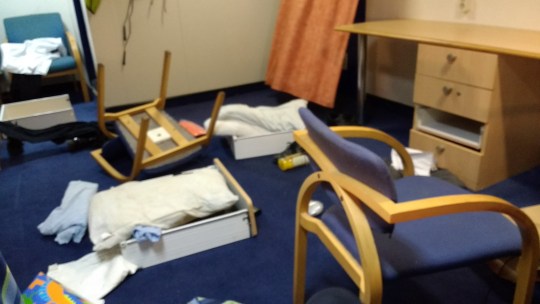
Going through the North Sea? You might want to get used to the scene above. Sometimes the sea will just trash your space depiste your best efforts.
So, it looks like last Septembers phase ones are starting to head to sea! It���s always tricky knowing what to take with you on your first trip so I’ve compiled a basic list. Obviously some things may need to be swapped out depending on the climate you find yourself but based on a vessel that will probably experiance a wide range of tempertures:
- 7 primark tees
- One for every day of the week. They will get trashed so I recommend buying a new batch every time you join ship and just dumping them in the rag pile when done.
- 2 day to day / shore tees/shirts
- 10 pairs of socks
- 10 pairs of underwear
- Hoodie
- Warm casual coat
- Baseball cap for working
- The sun is a killer! Seriously, protect your head. The same goes for the bandana/buff in really hold weather. Also, if you’re tall like me, you’ll appreciate the cap hitting bulkheads and doorframes before your head does!
- Buffs/bandana for helmet/cold
- Comfy shoes for bridge and shore
- I’m a massive Dr Martens fan but I’ll probably grab some Etnies skate shoes for my next trip. Cheap Converse style pumps will do the job for cheap though.
- swimming shorts for super hot days and shore leave
- Uniform for pilotage and meal times.
- This one really depends on the company and the captain. We only wore uniforms for the times mentioned above but I think cruise ships and private vessels are a lot more particular about it. Better safe than sorry.
- boiler suits (if you have them)
- steel toecapped shoes (if you have them)
- work gloves
- Ear plugs
- A decent pair will set you back about £15 on amazon but believe me, they’re worth the extra cost. You’ll be getting calls at all hours of the day and night so you want something that will drone out the drone of the engine but allow direct noises like alarms and phones to cut through.
- Laptop
- External hard drive of movies and music
- You won’t be getting Netflix at sea!
- Decent size pendrive
- Because you wouldn’t want to give your main external drive out. Accidents happen, viruses get spread, just play it safe.
- Few pictures to make the space more homely
- Kindle/Books
- Notebook for your boilersuit
- Couple of A4 refill pads to work in
- Basic stationary
- The Officers probably won’t appreciate you raiding the ship’s stores. Also, if you can get some half sized pencils, do. Biros will just explode in high temperature areas.
- Mug
- Either a decent sports bottle or a handful of plastic bottles of water
- Stay hydrated! It’s way too easy to get sunstroke on deck so do yourself a favour and get into the habit of polishing a bottle of water off between breaks.
- A pocket torch and batteries
- Cover the end with a red sweet rapper so it doesn’t kill your night vision on bridge. You will not be popular if the watchmen has to regain his night vision every five minutes just because you need to read a control panel!
- The standards (toothpaste, shower gel etc)
- Cheap vaseline for hot climates
- talcum powder for hot climates
- bonjela
- You will get ulcers from tiredness, trust me. So many ulcers...
- lip salve
- decent moisteriser
- The sun, cold, ropes and sea water will not be kind to you!
- back up towel
- Medication (if required)
- Glasses Cleaning Kit (if required)
Although they’re definitely not essentials, I always made an effort to buy a few bottles of squash and pots of decent coffee before joining ship. There’s no guarentee the ship will provide these and I found that they, for their cost and effort, made the day to day so much better.
It is an artform, knowing exactely what to bring. Experianced seafarers have it down to an art and we’re still learning so I wouldn’t be surprised if there’s stuff that you don’t even touch whilst you’re away, and what works for you won’t work for everyone. But still, I feel like this is a good basic list to build off of.
Until next time, stay lucky!
2 notes
·
View notes
Text
30.01.18 - All Hands On Deck

Alright, let's get into the nitty gritty of phase two! I've decided that, rather than focussing on my time at sea chronicology, I'm just going to talk a little about the various elements that make up ship life for a cadet at some point or another. Today let’s look at deck!
This morning we're going to talk about deck work which, depending on what your ship is like, could take up the first month or so of your trip or the while thing. I personally spent 6 or 7 weeks on deck before I even begun basic bridge work. Trust me, this is important. You hear stories of cadets who walk onboard with a 'too good for this' attitude and there's nothing to be gained from that. By throwing yourself into deck work you'll gain a much better understanding of what it takes to maintain a vessel as well as an appreciation for the work of the AB's.
I'll be honest, starting off, I was bloody useless. I didn't come up through the sea cadets or anything like that so I was truely starting from scratch. Learning knots were particularly tricky but I got there eventually through constant use and repition. One of the first jobs I was involved in was taking inventory of the various paint lockers and store areas. You can probably imagine how repetitive that was. It did give me an understanding of what needs to be carried onboard though and it was never too tricky to find the necessary tool afterwards.
Now, chipping and painting make up a large part of the day to day work. Keep in mind that your vessel will be exposed to seawater almost every day for it's working life. Keeping a ship floating is, essentially, a constant battle against rust. One of the most effective ways of removing rust is simply chipping it away using air guns before repainting the area. Believe me, it is a loud, dusty, thankless job, but everyone has to do it. The worst for me was doing the vent spaces which included climbing on top of massive fans and squeezing into cramped, poorly lit vent hatches to chip... it wasn't ideal, nobody enjoys it, but the quicker you get it done the quicker you can leave.
Counting and maintaining the lashings, hooks and twistlocks is another such job. We spent just over a week and a half pulling them from the cages, checking each and every one before re-strapping them (if necessary) and giving them a good spray of WD40. Yes, WD40 solves almost everything. There are hundreds if not thousands of each on a vessel - it's a long job.
It isn't all bad though. We spent a couple of days washing the deck with high power hoses which was a lot of fun in the muggy north american heat. We watched pods of dolphins and whales whilst painting the railings and mending ropes. For every day spent chipping and painting there was probably a couple of days spent on the upper deck just cleaning up, maintaining the gear and enjoying the sun.
It's also a great time to get to know the deck crew. Most will have years upon years of seatime in their books so it's worth listening to their stories. The industry has definitely changed in the last 30 or 40 years, and everyone has their own opinion on that. You'll make your own mind up there.
And then there's being on day work. It's easy to think 'Oh come on, I came here to escape the 8-5' but once you start on watches you'll begin to miss the full nights sleep that comes with that routinne. Swings and roundabouts!
Until next time, stay lucky.
0 notes